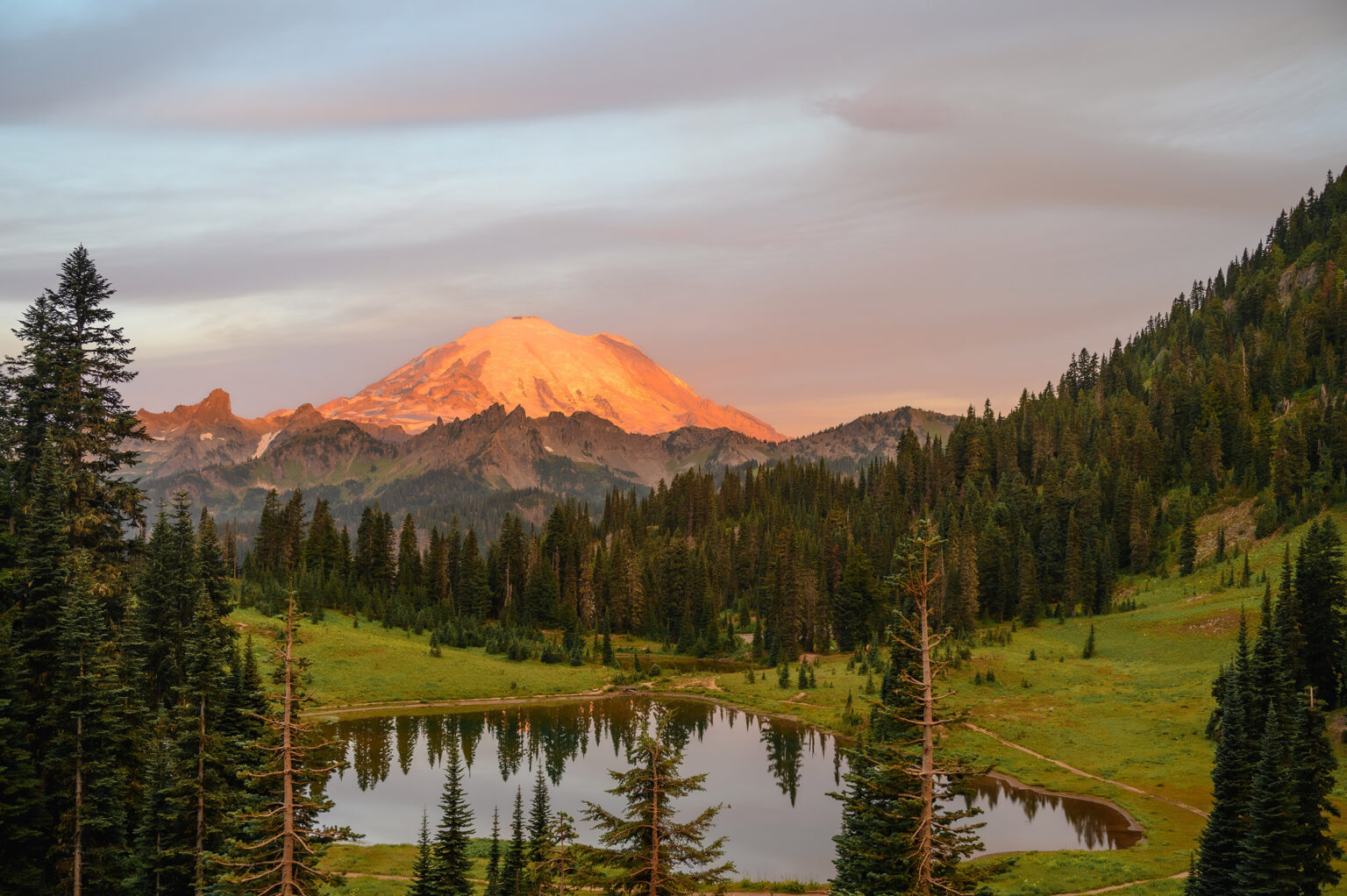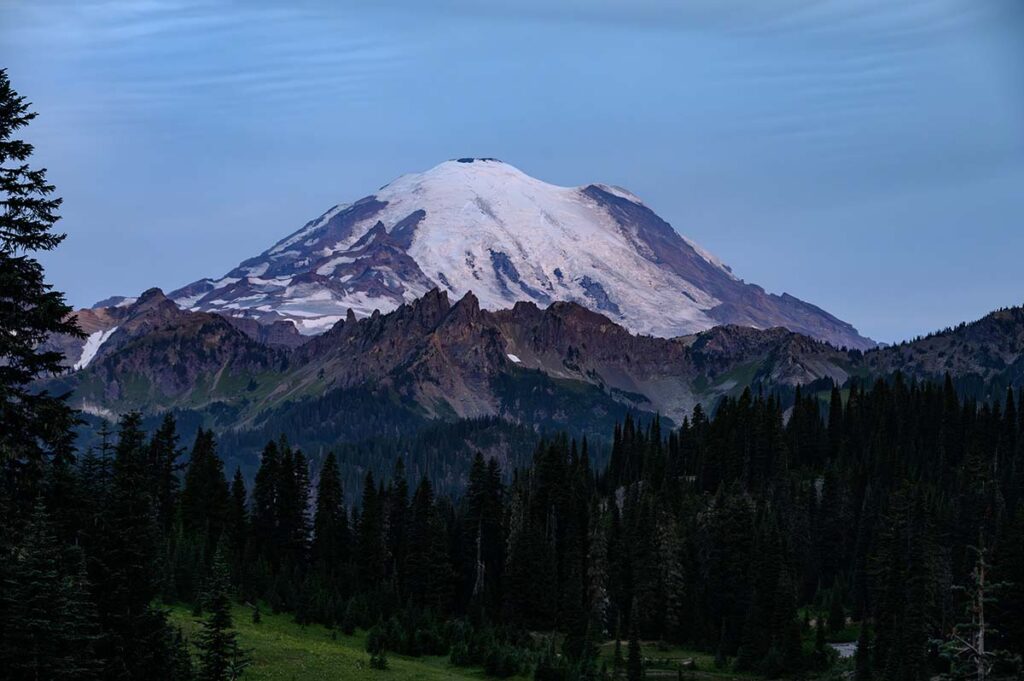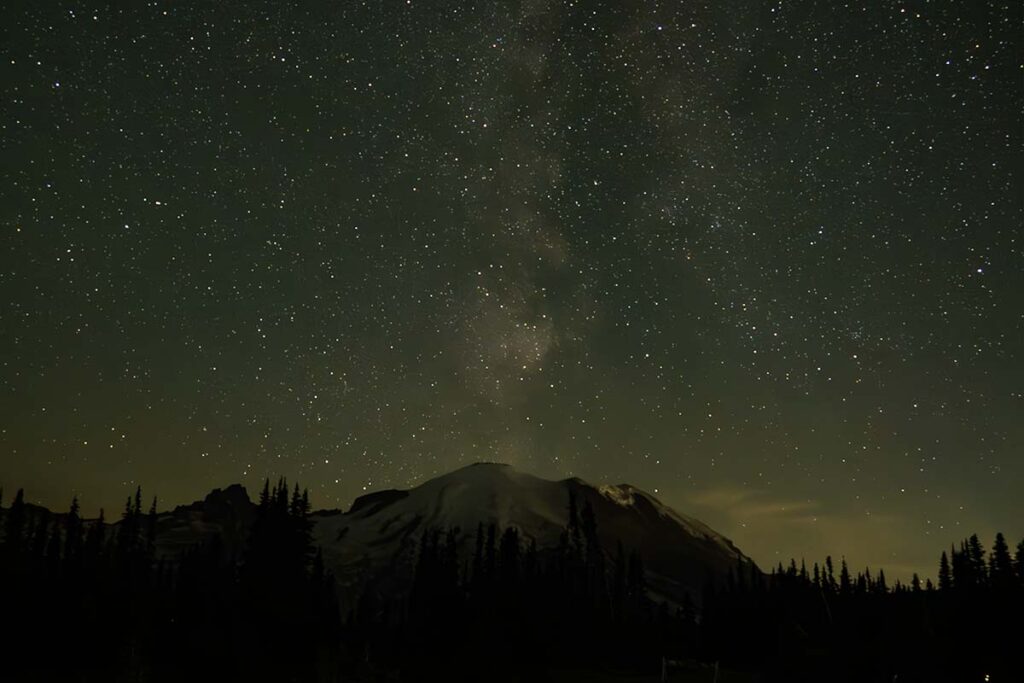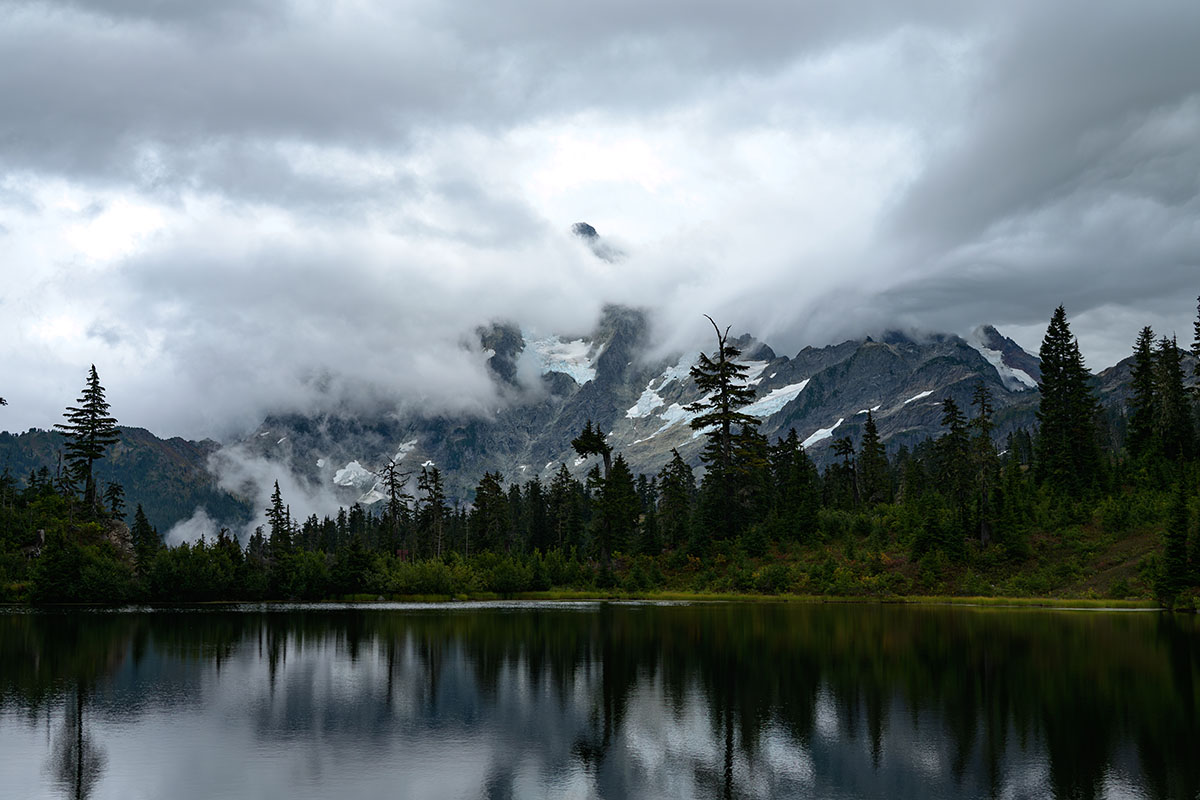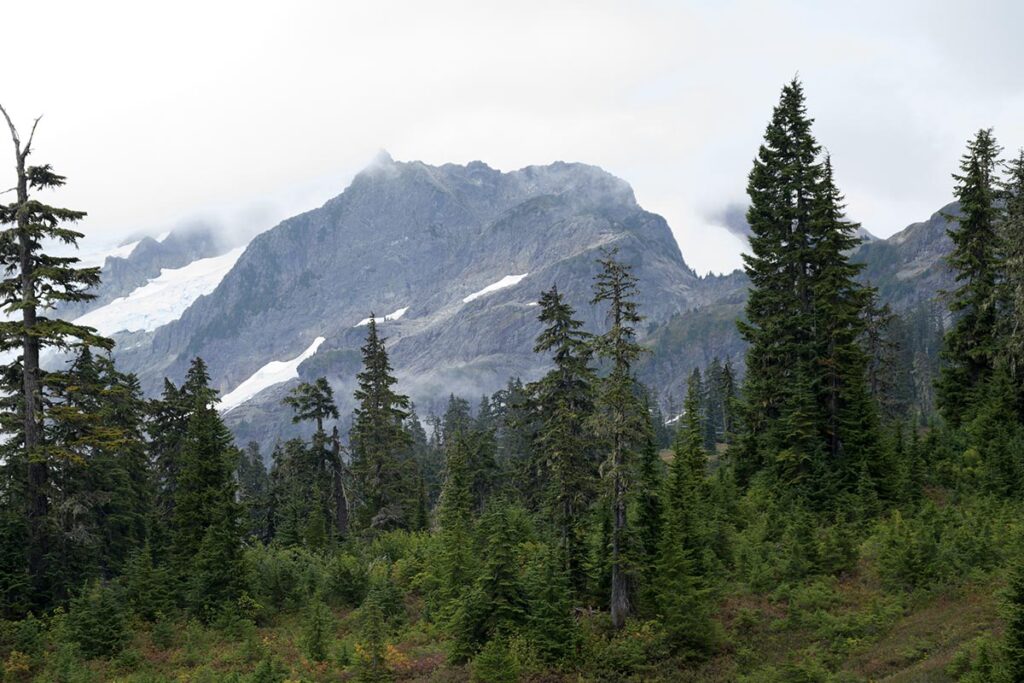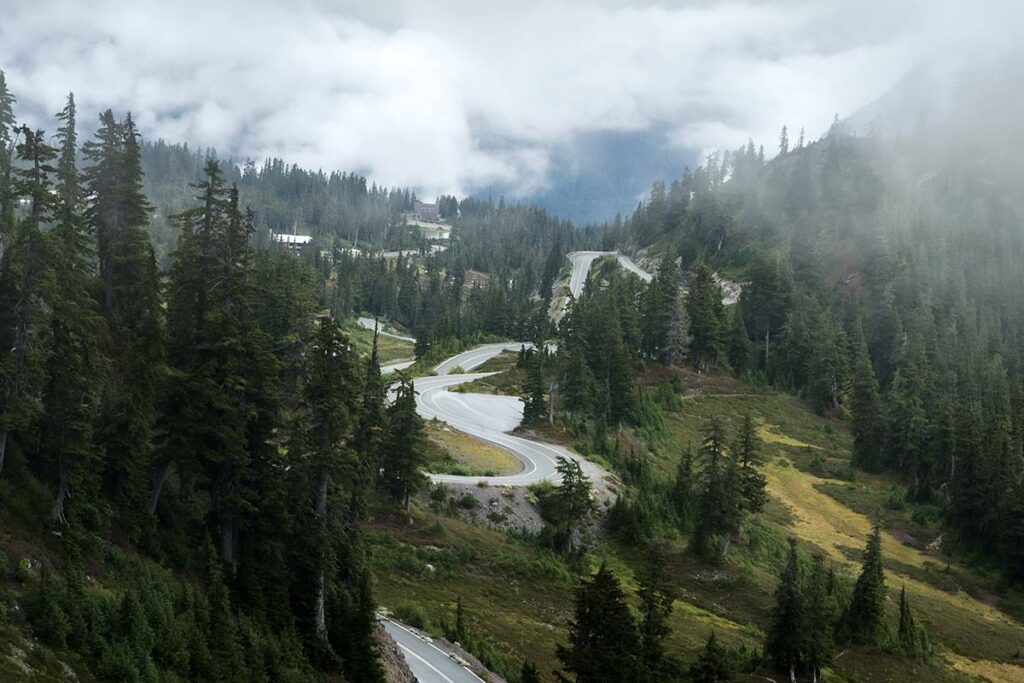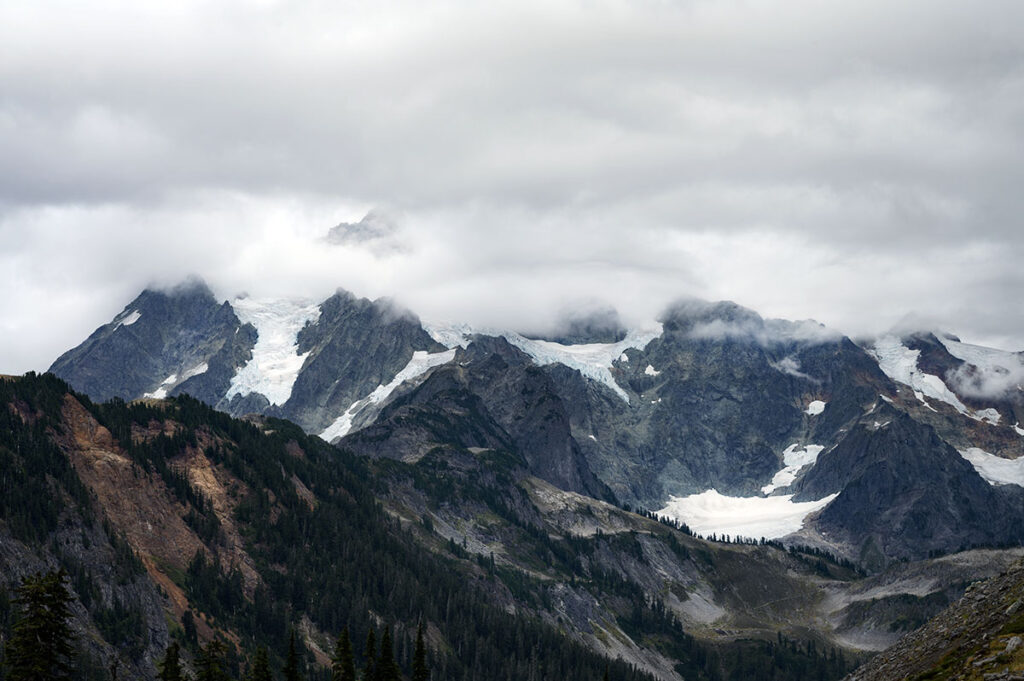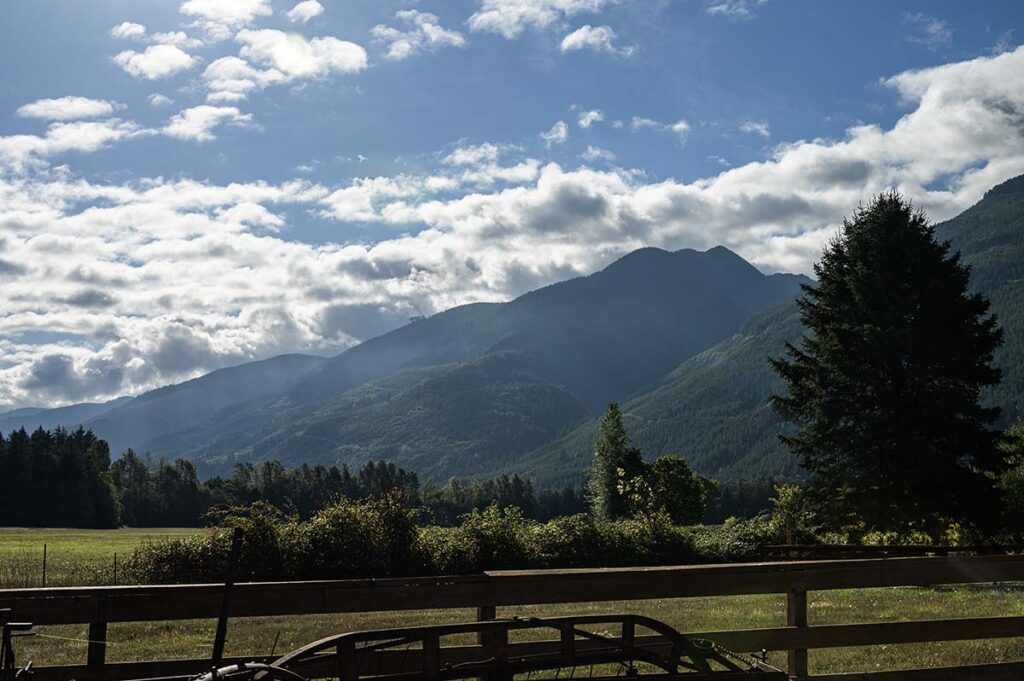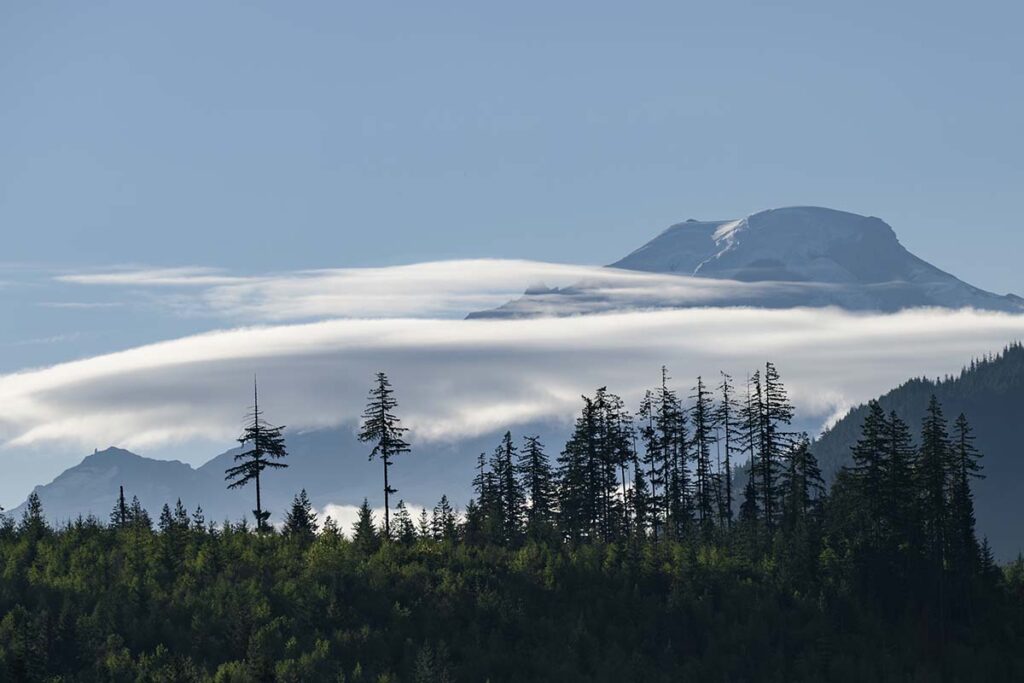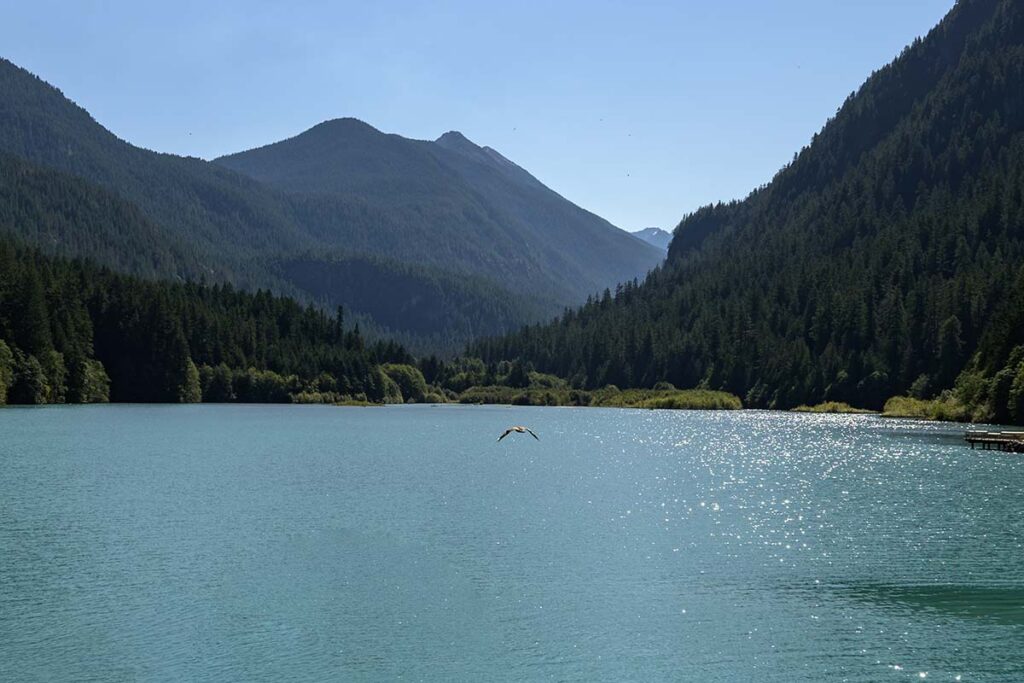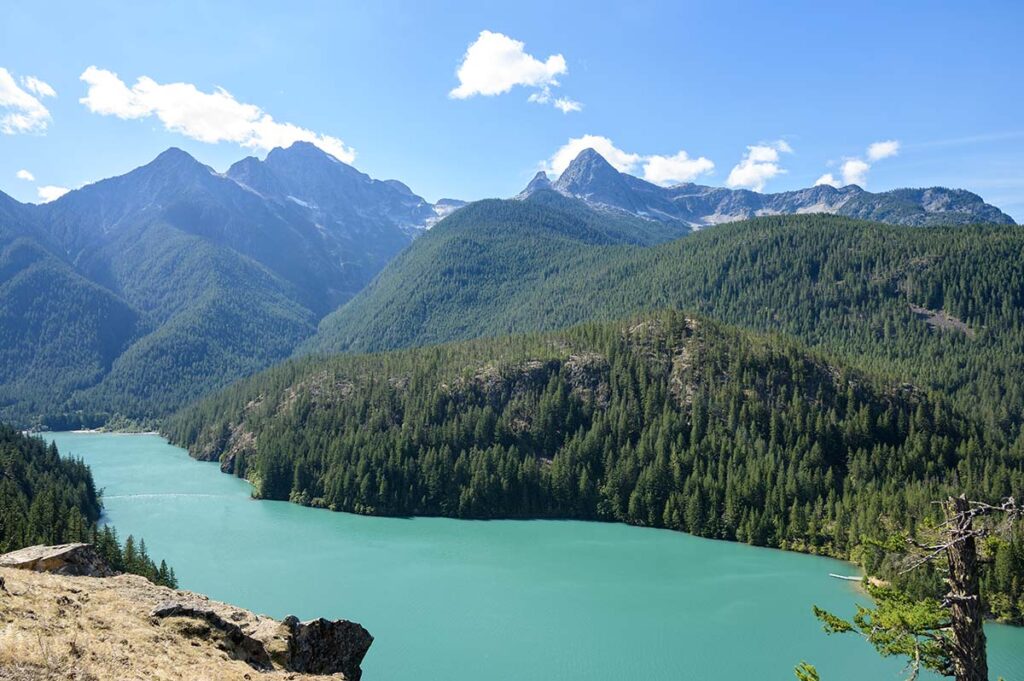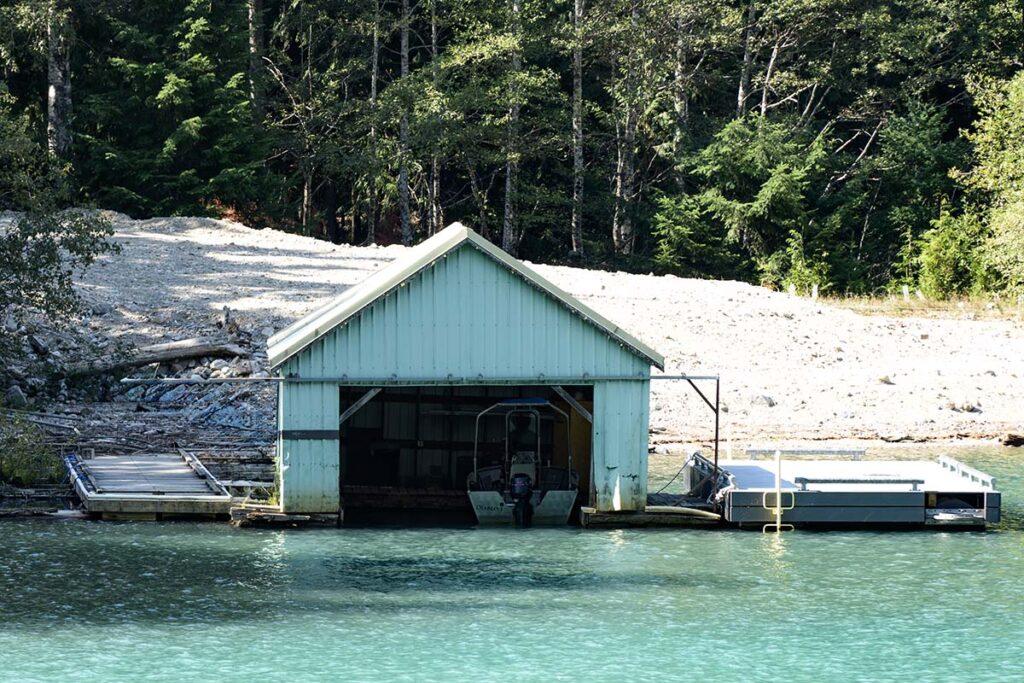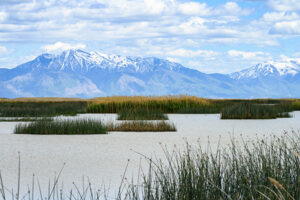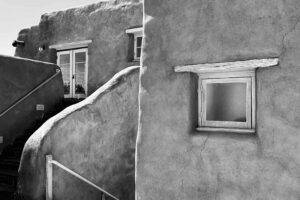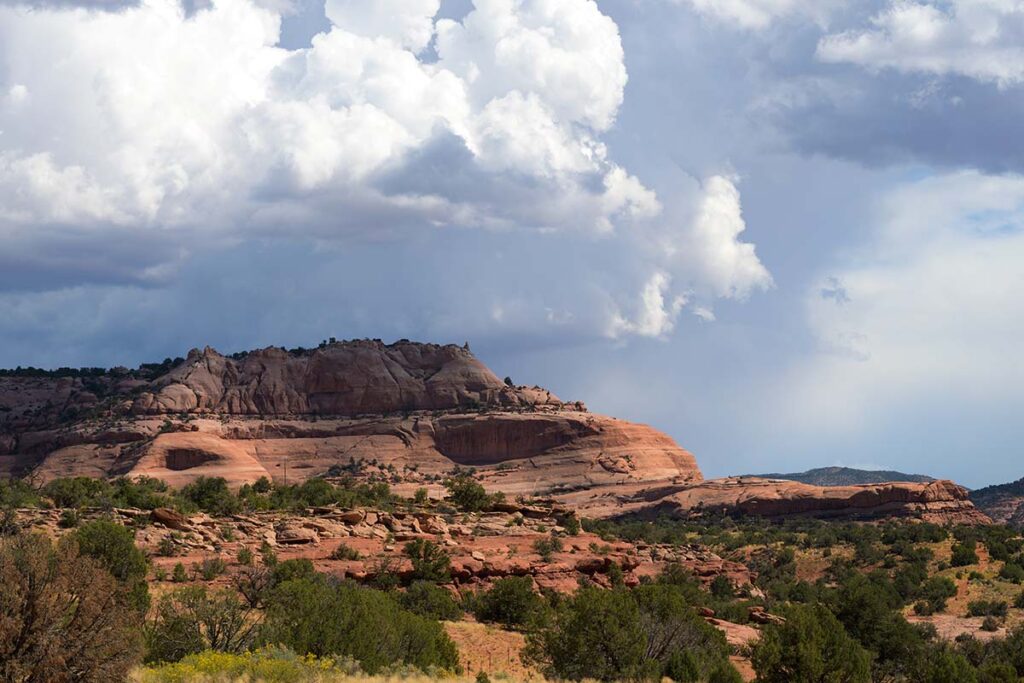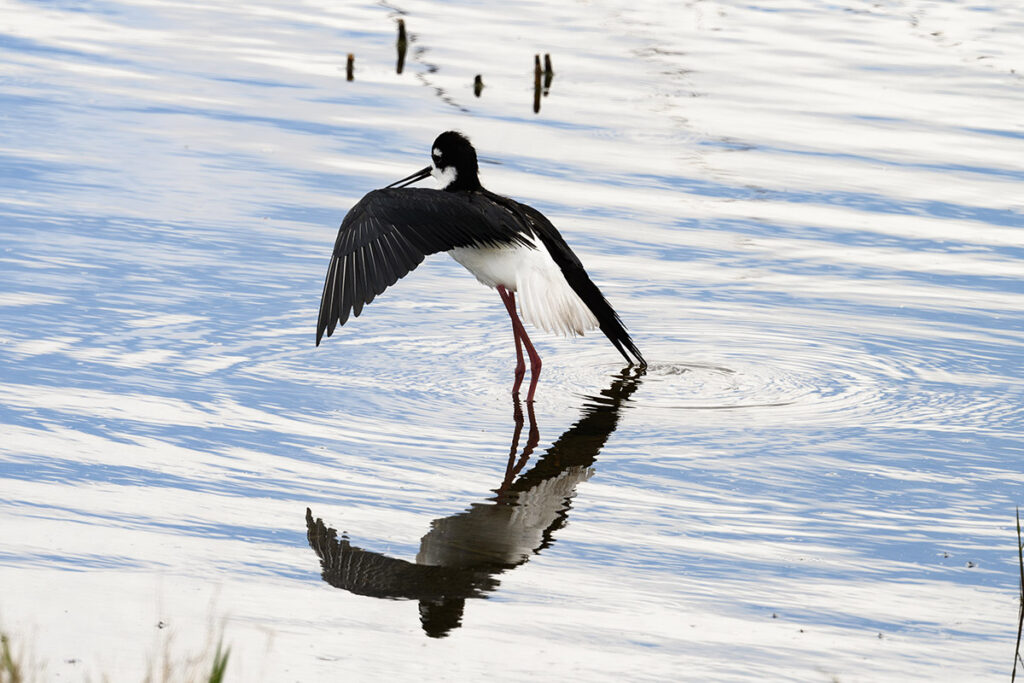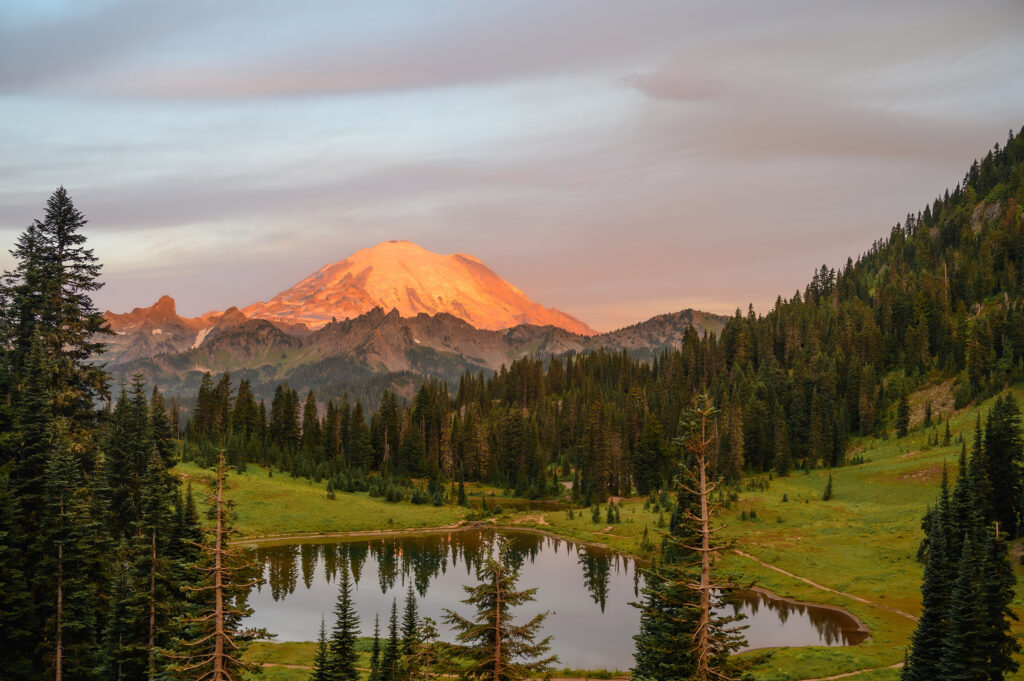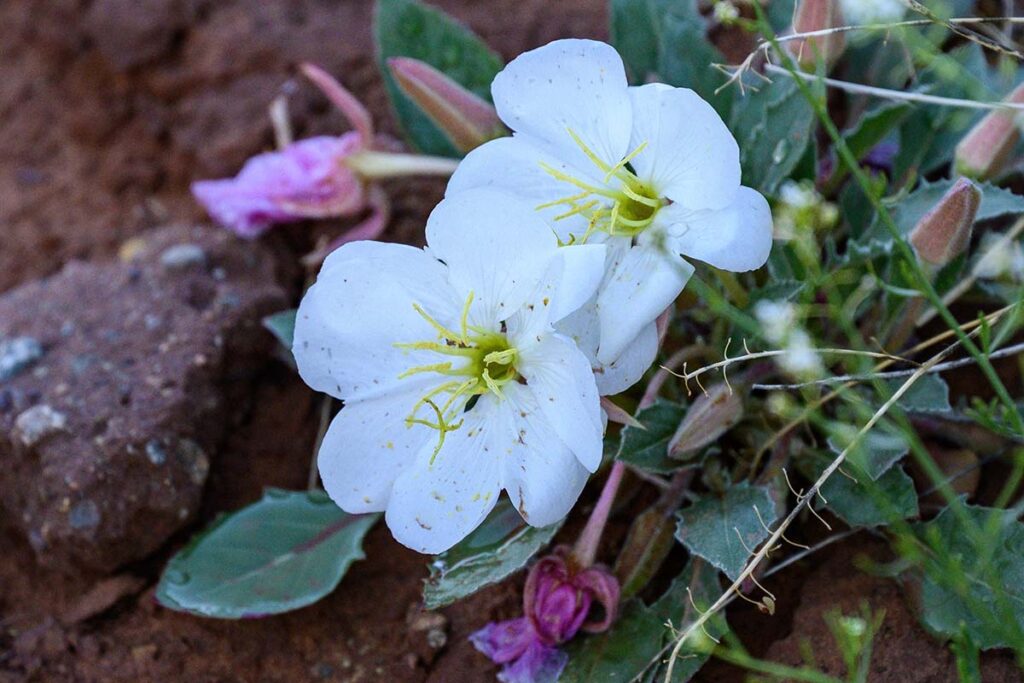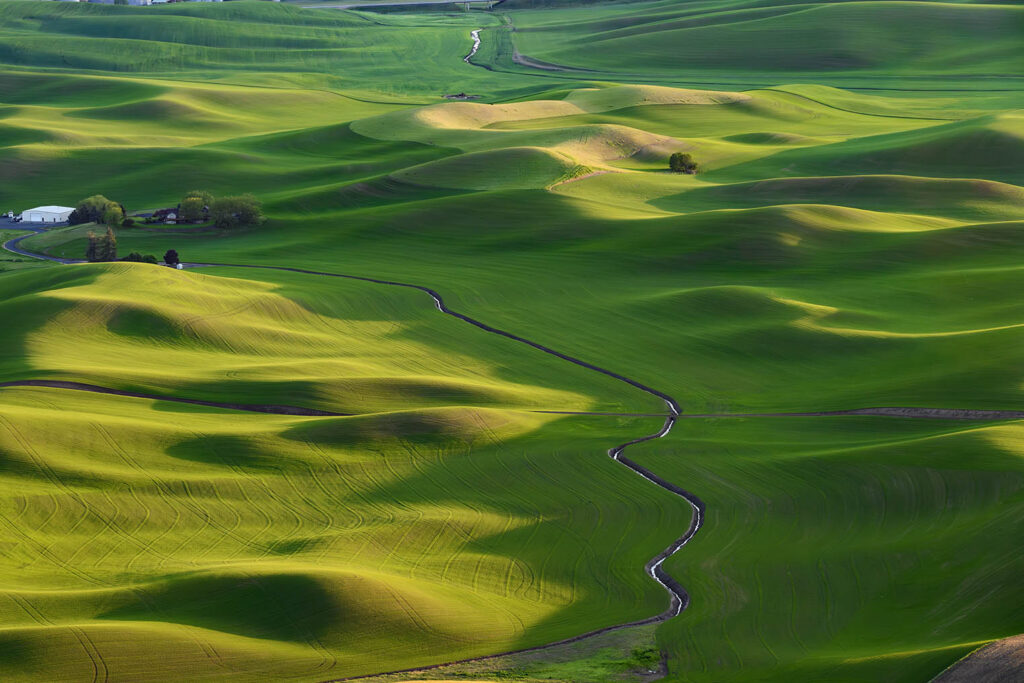Ascending to 14,410 feet above sea level, Mount Rainier stands as an icon in the Washington landscape. An active volcano, Mount Rainier is the most glaciated peak in the contiguous U.S.A., spawning five major rivers. Subalpine wildflower meadows and ancient forest cloaks Mount Rainier’s lower slopes. Wildlife abounds in the park’s ecosystems. Many mornings you can see the glow of headlights of ice climbers scaling this unbelievable glacial peak. Although I didn’t get to witness this, I did get to experience the peak at sunrise from Tipsoo Lake. Thanks to my partner Roy Burbank for making this trip possible!!
Visitors new to Washington may never have heard of Mount Shuksan, but it is one of North America’s most iconic peaks. Situated on the western flank of the rugged North Cascades National Park, the mountain is capped by glaciers and surrounded by picturesque alpine lakes and meadows. The area offers a wealth of outdoor activities year-round, including hiking, camping, mountain biking, fishing, climbing, mountaineering, skiing, and snowshoeing. Mount Shuksan is frequently photographed from nearby Picture Lake, which provides a reflecting pool for this striking summit. The peak is widely regarded as one of North America’s classic mountaineering routes, renowned for its technical difficulty. For those seeking a more relaxing pursuit, accessible trails around the mountain, including the aptly named ‘artist point’, offer unparalleled views of Mount Shuksan as well as nearby Mt. Baker. The morning that I was there, artist point was fogged in, but it still made for an incredible day!
Mt. Baker
Mt. Baker is located on the west side of the Cascades between the Canadian border and Mt. Rainier National Park, you will find glacier-covered peaks, spectacular mountain meadows and old-growth forests rich in history and outdoor fun! Mt. Baker is also host to Mt. Baker Ski Resort. Check it out for winter and summer activities!
Diablo Lake
Enjoy views of glacial-fed Diablo Lake, located within the heart of North Cascades. See rugged mountains that rise around the lake and the historic Diablo Dam in the distance. Learn about water, geology, glaciers, and the plants and animals that call this place home.
In summer, the distinctive turquoise color of the lake is the result of suspended fine rock particles refracting sunlight. These rock particles, called glacial flour, enter the lake when rock from the surrounding mountains is eroded by ice and flows into the water through glacial streams.
Back to Washington
